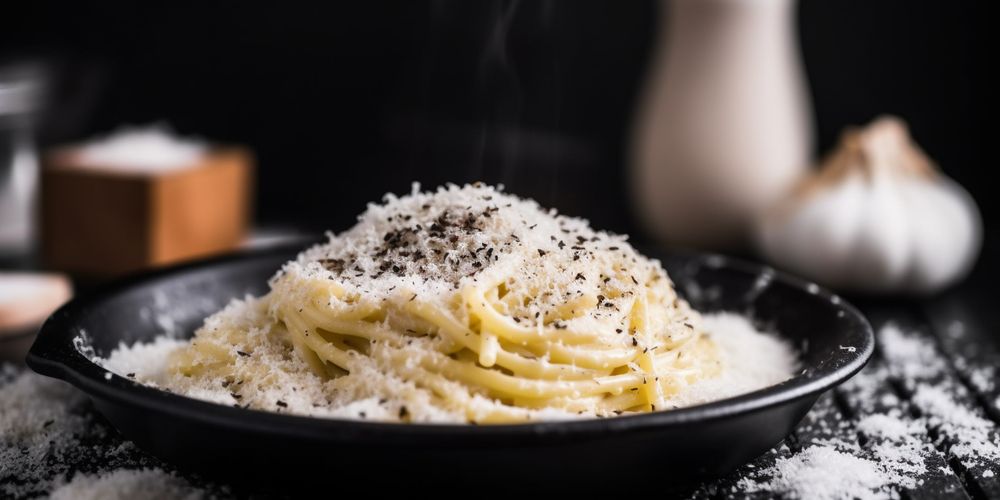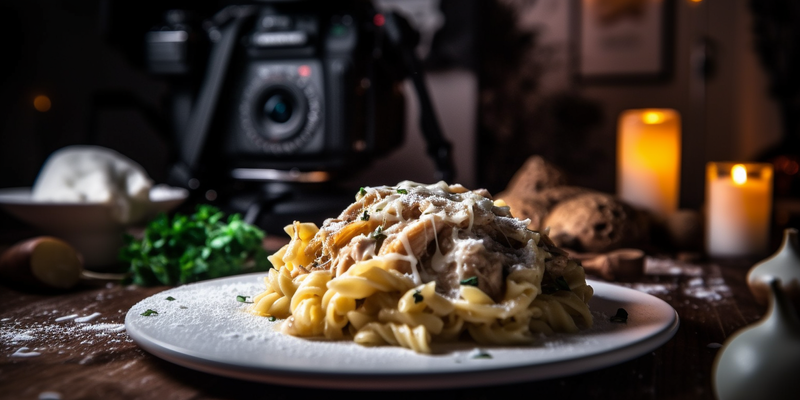
If you’re looking for a quick and easy pasta dish that’s full of flavor, look no further than Cacio e Pepe. This classic Roman recipe is made with just a few simple ingredients, but it packs a real punch.
Cacio e Pepe literally means “cheese and pepper” in Italian, and those are the two main ingredients that give this dish its unique flavor. The Pecorino Romano cheese used in this recipe is a hard, salty cheese made from sheep’s milk, and it pairs perfectly with the bold flavor of freshly ground black pepper.
Here’s what you’ll need to make Cacio e Pepe for four people:
Ingredients:
- 400g spaghetti
- 200g Pecorino Romano cheese
- 2 tsp black pepper
- 2 tbsp butter
- 2 tbsp olive oil
- 1 tsp salt
Instructions:
-
Cook spaghetti according to package instructions in a large pot of salted water until al dente. Reserve 1 cup of pasta water, then drain the rest.
-
Meanwhile, grate Pecorino Romano cheese and freshly grind black pepper. Put the cheese and pepper in a large mixing bowl and mix well.
-
Add 2 tablespoons of butter and 2 tablespoons of olive oil to a large skillet over medium heat. Add the reserved pasta water and stir until the butter has melted.
-
Add the cooked spaghetti to the skillet and toss to coat with the sauce. Turn off the heat.
-
Add the cheese mixture to the skillet and toss well until the cheese has melted and the pasta is coated in a creamy sauce.
-
Serve hot and enjoy!
Variations
- Vegetarian version: This recipe is already vegetarian, but you can make it vegan by using vegan butter and cheese.
- Add some veggies: You can add some vegetables to this dish to make it healthier and more colorful. Some great options include cherry tomatoes, spinach, or roasted red peppers.
- Make it spicy: If you like a bit of heat, you can add some red pepper flakes to the cheese and pepper mixture before adding it to the pasta.
- Use a different type of pasta: While spaghetti is the traditional pasta used in this recipe, you can use any type of pasta you like. Try using linguine, fettuccine, or even penne.
Cacio e Pepe is a classic Italian dish that’s perfect for any occasion. With just a few simple ingredients, you can create a creamy and delicious pasta dish that’s sure to impress. So why not give it a try tonight? Your taste buds will thank you!
FAQ
What is Cacio e Pepe?
Cacio e Pepe is a classic Italian pasta dish made with spaghetti, Pecorino Romano cheese, black pepper, and olive oil.
Can I use Parmesan cheese instead of Pecorino Romano?
While Pecorino Romano cheese is the traditional cheese used in Cacio e Pepe, you can substitute it with Parmesan cheese if you can’t find Pecorino Romano.
Can I use any type of pasta for Cacio e Pepe?
Traditionally, spaghetti is used for Cacio e Pepe, but you can use any type of pasta you prefer, such as bucatini or linguine.
Can I use pre-shredded cheese for this recipe?
It’s best to use freshly grated cheese for this recipe as it melts better than pre-shredded cheese and will give you a creamier sauce.
How do I prevent the cheese from clumping together?
To prevent the cheese from clumping together, remove the pan from the heat before adding the cheese and stir it in slowly and continuously until it has melted and combined with the pasta water.
Can I add other ingredients to this recipe?
While Cacio e Pepe is traditionally made with just spaghetti, cheese, pepper, and olive oil, you can add other ingredients such as bacon or mushrooms to give it a twist.
Can I make Cacio e Pepe ahead of time?
Cacio e Pepe is best served fresh, but you can make the cheese sauce ahead of time and store it in the refrigerator for up to 3 days. When ready to serve, reheat the sauce in a pan and toss it with freshly cooked pasta.
How do I reheat leftover Cacio e Pepe?
To reheat leftover Cacio e Pepe, add a splash of pasta water to a pan, add the leftover pasta and sauce, and toss until heated through. The pasta water will help to loosen the sauce and prevent it from sticking together.
Can I freeze Cacio e Pepe?
We do not recommend freezing Cacio e Pepe as the texture of the cheese sauce may change when thawed.
What wine pairs well with Cacio e Pepe?
A dry white wine such as Pinot Grigio or Sauvignon Blanc pairs well with Cacio e Pepe as it helps to cut through the richness of the cheese sauce.



